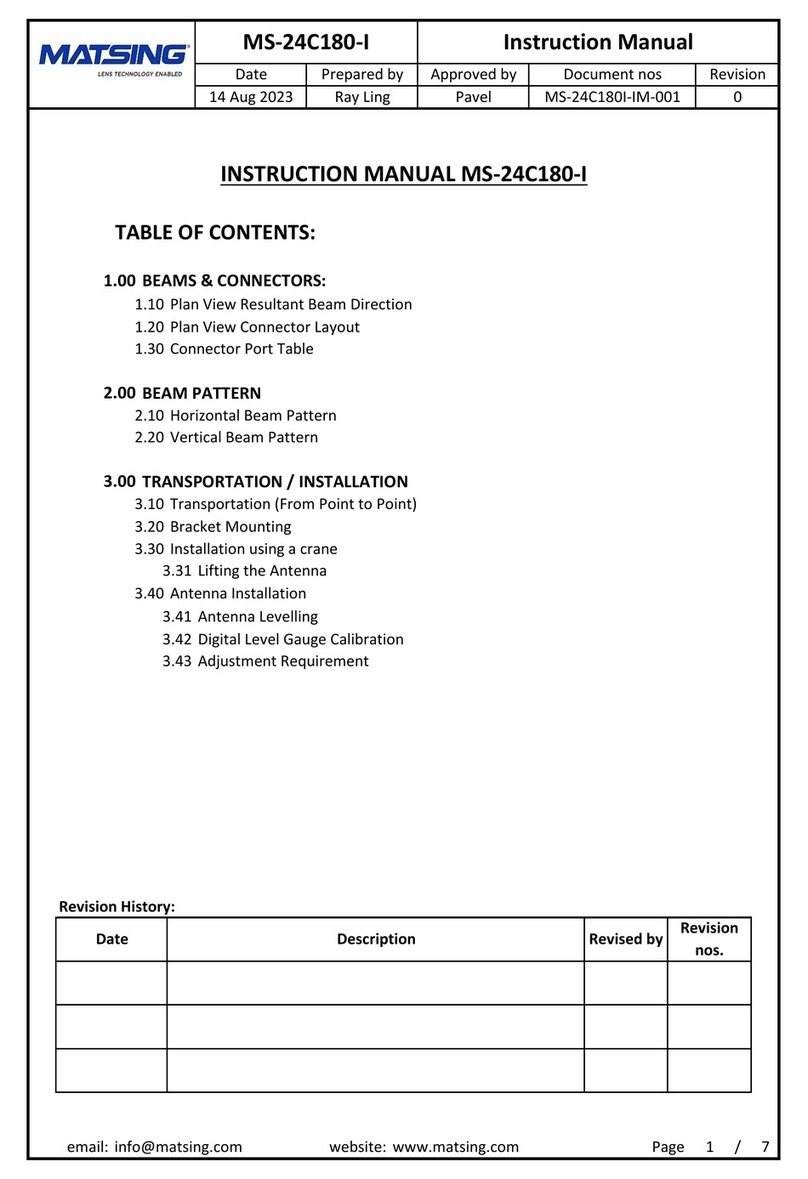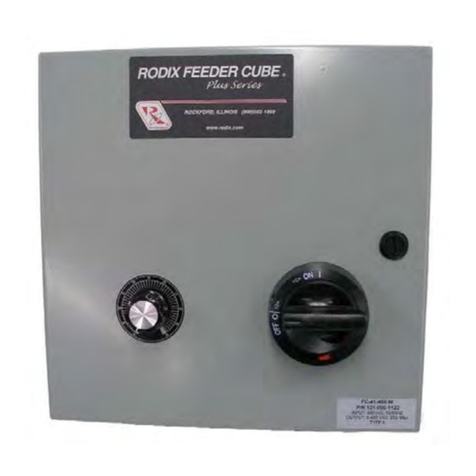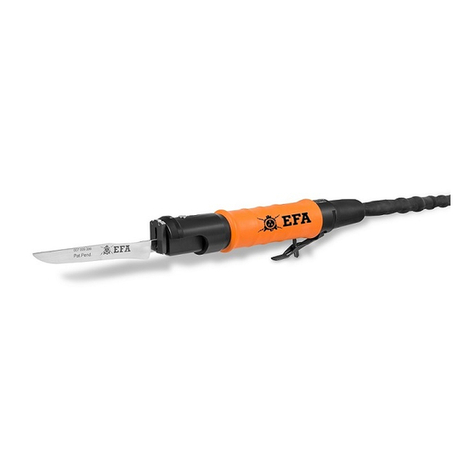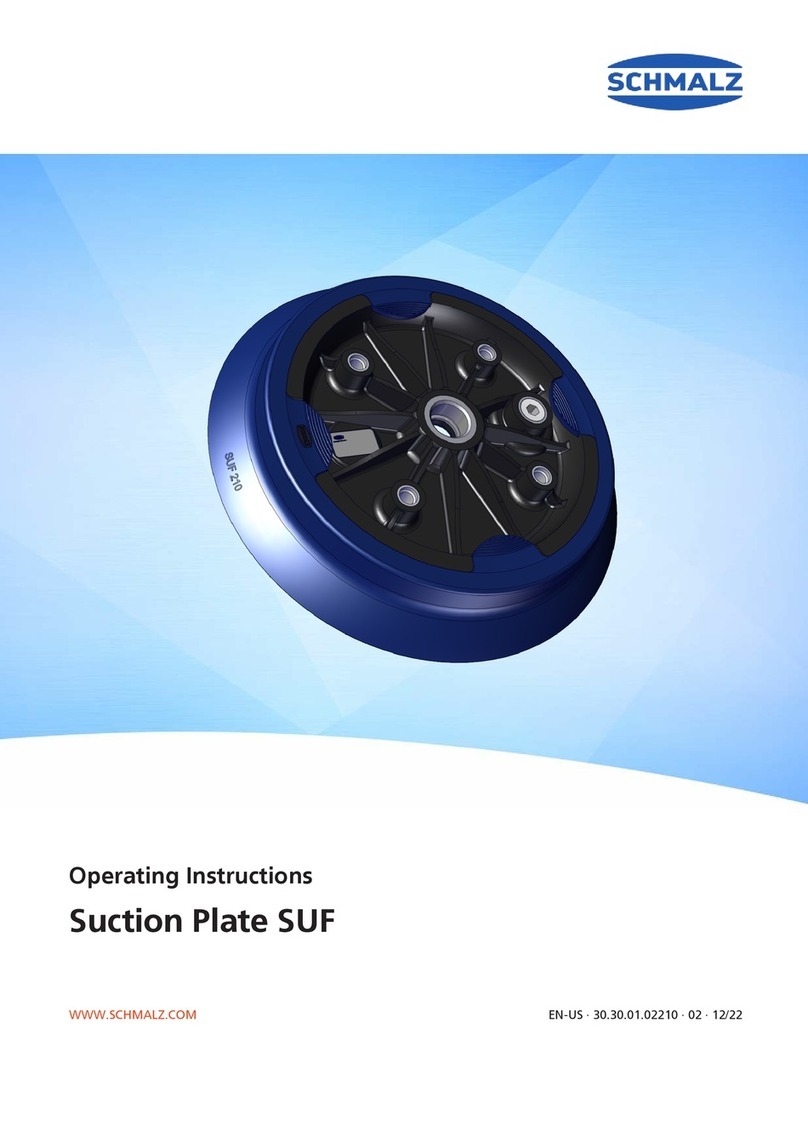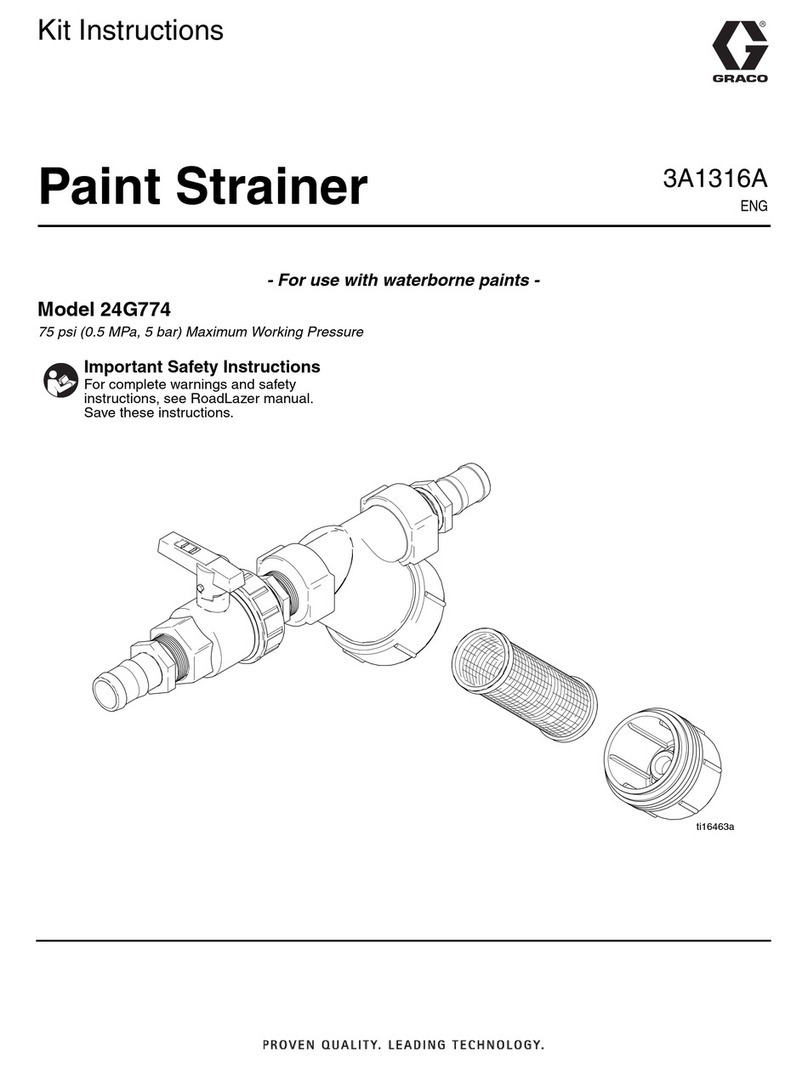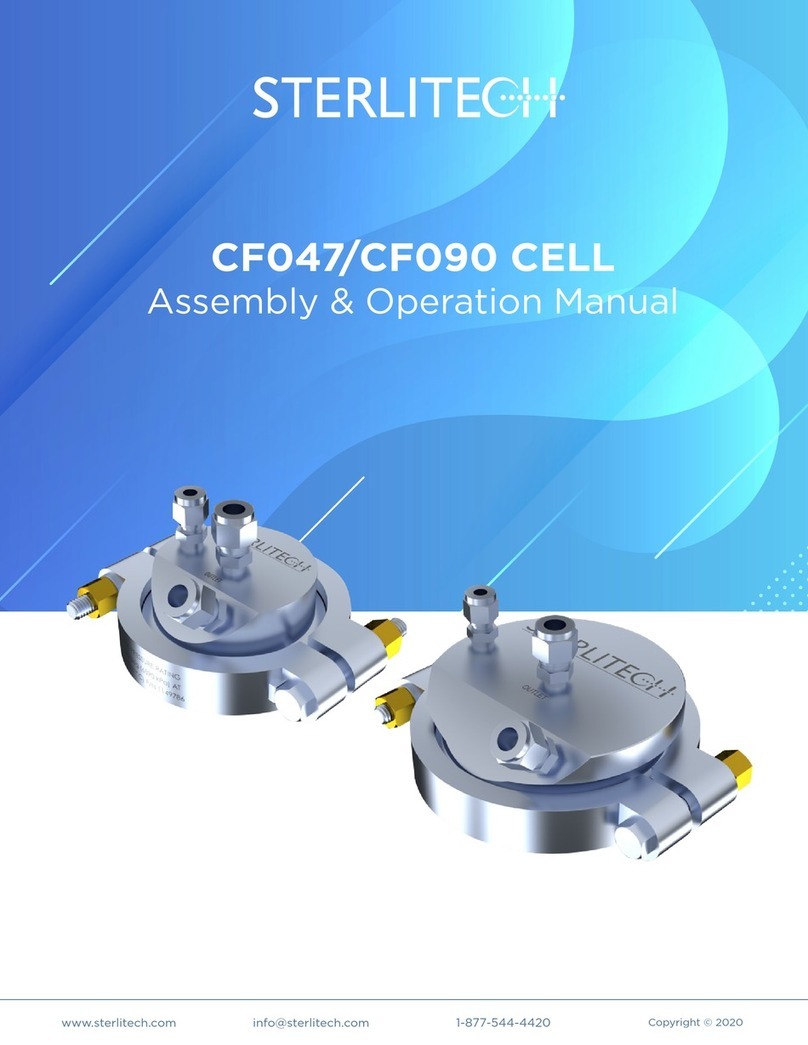Evenheat Salt Bath 709 User manual

Salt Bath 709 / 718 / 818
Installation and Operating Manual
North American Model
June 2019
Page 1of 36
Salt Bath Manual Index
Statement of Use –Overview
1
Standard/Everyday Use
Wear Personal Protective Equipment
20
Safety
Turn on Any Ventilation Systems
20
Warning Symbol Descriptions
2
Power Up the TAP Control
20
Emergency Shutoff Provision
2
Verify Chamber Thermocouple Position
20
Electrical Safety
3
Start the Heat Treat Process
20
Salt Bath Kiln Location Safety
3
Inserting the Immersion Thermocouple into the Molten Salt Bath
21
Kiln Use Safety
4
Inserting Work-Pieces for Heat Treating
23
Kiln Maintenance Safety
5
Pulling Your Work-Piece from the Salt Bath
24
Shutting Down the Process
24
Setting Up the Salt Bath Kiln
Stand Assembly & Kiln Placement
6
Evenheat Salt Bath Kiln Features
Thermocouple Installation
8
Two Control Thermocouples
25
Over-Temp Thermocouple
8
Immersion Thermocouple Mount
25
Chamber Thermocouple
9
Over-Temp Thermocouple Circuit
25
Immersion Thermocouple
11
Grounded Salt Pot and TC’s
25
Salt Pot Ground Strap Installation to Control Panel
12
TAP Control
25
Prepare the Salt Pot Ground Lug
13
Solid State
26
Placing the Salt Pot into the Chamber
13
Replaceable Drip Shields
26
Placing the Lid onto the Chamber
14
Swing View
26
Installing the Fiber Gasketing Material Around Salt Pot
14
Lid Design
26
Installing the Lid Drip Shield
15
3” Brick
26
Salt Pot Ground Strap Installation to Salt Pot Grounding Lug
15
Chamber and Floor Easily Replaced
26
Charging (Filling) Your Salt Pot
Salt Bath Maintenance
27
Put on Your Personal Protective Equipment
16
Salt Leaks
28
Turn on Any Ventilation Systems
16
Replacement Parts List
29
Charge (Fill) the Salt Pot with Your Heat Treat Salts
16
Salt Pot Design Specifications
29
Powering Up the TAP Control
16
Nu-Sal Heat Treat Salt Working Temperatures
30
Operating the TAP Control
16
Safety Data Sheet (SDS) for Nu-Sal Heat Treat Salt
30
Programming the TAP Control to Achieve Molten Salt
17
Chamber Thermocouple Controls Heat-up
17
Adding Additional Salt to Make Final Volume
18
Switching to the Immersion Thermocouple
18
Charging Complete
19
Proper Shutdown
19
Statement of Use - Overview of Salt Bath Operation
The salt bath heat treating process involves heating solid heat treating salts to a given temperature which causes them to liquefy by heat (become molten). These
salts are contained within a vessel that is commonly known as a salt pot. Once the salts become molten, and at the desired heat treat temperature, steel work-pieces
(blades, receivers, tools, etc.) are immersed into the molten salts and are allowed to remain there for the desired time period. Once the desired time period has
elapsed, the work-pieces are removed from the molten salt to undergo further processing as necessary.
Advantages of the salt bath heat treat process include a heat treat environment that is absent of oxygen. Oxygen oxidizes and decarburizes steel when taken to
temperature: neither effect is generally preferred in the finished product. Also a salt bath, by its nature, tends to offer phenomenal temperature distribution
throughout the work piece.

Salt Bath 709 / 718 / 818
Installation and Operating Manual
North American Model
June 2019
Page 2of 36
SAFETY
Read and understand this installation and operating manual as well as the controls manual before operating your salt bath heat treat kiln. If you have any questions
please contact Evenheat Kiln at 989-856-2281 or at evenheat-kiln.com.
Warning Symbol Descriptions
Warning symbols are used throughout this manual. These symbols alert the operator to certain hazards and important information. Pictured below are symbols
used along with a description of each.
Explosion/Pressure Release
Hazard
This symbol alerts you to
potential explosion and
pressure release hazards.
Electric Shock Hazard
This symbol alerts you to potential
electric shock hazards.
Burn Hazard
This symbol alerts you to
potential burn hazards.
General Cautions and Information
This symbol alerts you to particular
cautions, hazards and information.
Toxic Hazard
This symbol alerts you to toxic
hazards.
Emergency Shut Off Provision
The salt bath kiln power supply connection (electrical plug and receptacle) act as the emergency electrical power shut off. Access to these devices should
be unobstructed and safe at all times. To remove electrical power from the salt bath kiln remove the salt bath power cord plug from the electrical power
receptacle.

Salt Bath 709 / 718 / 818
Installation and Operating Manual
North American Model
June 2019
Page 3of 36
Electrical Safety
Model SB 709 electrical service requirements: The SB 709 consumes 18A at 120V and uses a NEMA 5-20 plug/receptacle configuration. A “fully rated” 20A
breaker is required.
Model SB 718 electrical service requirements: The SB 718 consumes 18A at 240V and uses a NEMA 6-20 plug/receptacle configuration. A “fully rated” 20A
breaker is required.
Model SB 818 electrical service requirements: The SB 818 consumes 30A at 240V and uses a NEMA 6-50 plug/receptacle configuration.
A licensed electrician should be used for all electrical installation and service. All applicable local, state and federal electrical codes must be followed.
Use correct voltage, wire size and fuse or breakers (fully rated 20A breaker required on the SB 709 and SB 718). Kiln electrical requirements are located on
the kiln nameplate. Make sure all electrical connections are tight. Avoid using aluminum wire.
Always use the proper electrical receptacle. Never alter the kiln cordset or cordset plug. Alterations can be dangerous. Alterations will void any warranties.
The salt bath kiln electrical service must be properly grounded.
The salt bath process involves an electrically conductive salt pot, electrically conductive salt material, electrically conductive work-piece, electrically
conductive work-piece holder, electrically conductive thermocouples and, most importantly, an electrically conductive you! Everything about the salt bath
kiln is electrically conductive. It’s for this reason that we provide and require electrical grounds on the kiln, salt pot and thermocouples. In the event of an
electric short these grounding mechanisms safely dissipate the electrical energy. Pay attention to them, inspect them periodically and do not defeat them.
Evenheat recommends that a voltage check be performed before placing the kiln into service, ideally before actual purchase. Operating voltage varies. The
kilns operating voltage (printed on the kilns nameplate) must match the applied voltage (actual electrical service voltage). If it does not, do not install or
operate the kiln as potential electrical and fire hazards exist. Contact Evenheat for guidance in such cases.
Unplug or disconnect the kiln from the electrical service before accessing the chamber for servicing or vacuuming. Do not attempt to touch or replace the
heating elements while the kiln is plugged in or connected to the electrical service. Electric shock may result in serious injury or death.
Never, ever use an extension cord to operate a kiln.
Salt Bath Kiln Location Safety
Do not place or use the kiln on a combustible surface.
Do not install the kiln closer than 12” (31cm) from wall surface or object or 36” from any ceiling surface. All wall and ceiling materials shall be
made of non-combustible materials.
Place only on the metal stand provided by Evenheat Kiln, Inc.
The surface on which the kiln is placed shall be level and capable of safely supporting the combined weight of the kiln, kiln load and any operating
personnel.
Observe all building, fire and safety codes when installing the kiln.
Install in a covered, well ventilated area.
Installation of a venting system may be necessary depending upon the type of heat treating salts you are or will be using. Consult with the manufacturer of
the salts and the material safety data sheet for recommendations regarding ventilation.
Never place the kiln in a small, enclosed area such as a closet, cabinet or very small room. The room in which the kiln is placed into service shall be capable
of safely dissipating all heat produced by the kiln.
Do not place the kiln in any structure resembling a carport or screened in porch. Avoid areas that are subject to outdoors weather.
Never install a kiln outside. Avoid moisture.
Do not use or install liquid based fire-fighting equipment such as water sprinklers or extinguishers. Carbon dioxide type fire extinguishers and sand are
acceptable means of fire-fighting in and around the salt bath kiln location. It is recommended that these fire-fighting methods are present and are
immediately available for use.

Salt Bath 709 / 718 / 818
Installation and Operating Manual
North American Model
June 2019
Page 4of 36
It is the user’s responsibility to be knowledgeable regarding any and all contaminants, produced by during heat treat process and to take steps to properly
and legally contain and dispose of these contaminants.
It is the user’s responsibility to provide ventilation capable of removing all gases, fumes and other airborne contaminants produced by the heat treating
salts from the work the area and building structure.
Do not store flammable or combustible products near or in the same room the kiln such as gasoline, paint, aerosol cans, paper, curtains, plastics, etc.
Better yet, store these items in another separate structure designed for this purpose.
Position the power supply cable, thermocouples and other materials in such a way as not to create a tripping hazard around the kiln.
The area around the kiln should be free of obstructions that interfere with the proper and safe operation of the kiln.
Never place anything under or above the kiln for storage. Absolutely nothing should be propped against the kiln.
Kiln Use Safety
Your work-piece(s) must be absolutely CLEAN. The steel work-piece, any steel work-piece holders and thermocouples you are immersing into the salt
bath must be absolutely free of moisture, grease, oil or any other contaminants. Contaminants, when immersed into the salt bath, will vaporize and
expand very quickly and violently. This violent expansion pushes the molten salts out of the top of the salt pot itself and into your work area. This
presents a fire and burn hazard which may result in personal injury or death as well as building structure damage.
Evenheat salt bath kilns are designed for the heat treatment of carbon steels only. Do not attempt to heat treat any material other than carbon steels or
stainless steels. If you are unsure as to the composition of a particular piece, do not heat treat it.
Tools and/or work-piece holders may find their way into the molten salt during use therefore; any tools and/or work-piece holders must be constructed of
carbon steels or stainless steels.
Do not attempt to heat treat any coated or plated steel. Coatings and plating’s include, but are not limited to zinc (galvanized), aluminum (aluminized) and
chrome.
When heating the salt bath salts from a solid to a liquid molten state do so at no greater than a 1000°F per hour heating rate (537°C per hour rate).
Heating too quickly can result in a pressure buildup within the vessel that contains the salts (salt pot). This pressure buildup can result in the salts erupting
from the salt pot and entering your work area. This presents a fire and burn fire hazard which may result in personal injury or death as well as building
structure damage.
DO NOT USE HEAT TREAT SALTS THAT CONTAIN CYANIDE. Cyanide is toxic and presents sure death to human life.
USE EXTREME CARE WHEN USING HEAT TREAT SALTS THAT CONTAIN NITRITES/NITRATES. Nitrites/Nitrates are generally found in low temperature,
tempering salts. Nitrite/Nitrate containing salts are toxic and can produce poisonous gases and/or explode if taken to too high of a temperature. If using
nitrite/nitrate containing salts it is highly recommended that a suitable ventilation system be used to safely remove any fumes or gases from the work
area. Follow all storage and use procedures.
DO NOT heat or re-heat any work-piece, work-piece holder or other work-piece devise that has been subjected to a nitrite/nitrate containing bath without
first removing all traces of the nitrite/nitrate salt from the work-piece or work-piece devices. Failure to do so will cause the nitrite/nitrate based salts to
exceed their safe working temperature and release poisonous gases.
Many hardening temperature salts are sodium chloride based. Sodium chloride is what we know generally as “salt”. These heat treat salts do contain some
degree of additives which may or may not represent a hazard. Know the salts you are using and take any additional, necessary and required precautions.
The Salt Bath kiln is designed for the heating of heat treating salts only. Do not attempt to heat oils, water or other substances. Failure to follow this
instruction presents a possible fire and electrocution hazard which can result in property damage, injury or death.

Salt Bath 709 / 718 / 818
Installation and Operating Manual
North American Model
June 2019
Page 5of 36
Protective clothing shall include a full face shield along with goggles, comfortable heat resistant gloves and long sleeved clothing. Avoid synthetic clothing.
When choosing gloves we feel it’s important that you choose a pair that allows for well-controlled movement (articulation) of the hand.
The salt bath kiln is designed to provide electrical grounding for the salt pot (and by extension, the molten salt) and temperature sensing thermocouples.
These grounds are protective measures designed to provide a safe dissipation of electrical energy in the event of an electrical failure (short circuit). All
ground connections must be in place.
Special attention shall be made to the ground connection at the salt pot. The ground connection at the salt pot is prone to corrosion with use.
Periodic inspection shall be made to ensure a sound electrical connection between the salt pot, salt pot grounding lug hardware and the salt
pot grounding strap. The grounding surfaces of these items should be clean and free of corrosion. Remove any corrosion at these points or
replace them if removal is not possible.
The salt bath process can produce fumes that are potentially harmful and corrosive. Ventilation should be provided to safely and legally remove fumes
produced during the salt bath process.
The surface of the kiln is hot and burn injuries are possible. Keep all children and unsupervised personnel away.
Under no circumstances should you touch the heating elements with your body or any other devises like tools. Electrical shock may result in serious injury
or death.
Do not operate the kiln over the maximum safe use temperature of your salt nor the maximum temperature rating printed on the nameplate.
It is the intention of our salt bath kiln design that you allow the salts to reach a molten state using the Chamber thermocouple for control. Once they reach
molten state it is then the intention of the design that you insert the Immersion thermocouple into the salt bath and control from the Immersion
thermocouple.
Never fire a kiln unattended.
Do not attempt to insert any thermocouples, or any other devices between the salt pot and lid. Doing so creates an electrocution hazard that may result in
injury or death.
Never allow the power cord to touch the kiln. If the cord, plug or receptacle become damaged discontinue use and replace immediately.
It is the user’s responsibility to have knowledge of the heat treat salts used and the material intended to be heat treated. If you are unsure as to the safety
and proper use of the heat treat salts and/or material to be heat treated contact the materials supplier for guidance. If you remain unsure as to the safety
of the salts or particular material do not do it. Hazards include materials that explode or produce toxic gases.
Heat treat all materials (work-pieces) according to the material manufacturer’s instructions or material type. Improper use may result in damage to the
kiln or material.
Do not use the kiln to prepare food, heat a living space, dry clothes or ice laden articles or use as a storage devise. The kiln is designed for one purpose and
one purpose only: the heat treating of steel.
The salt bath kiln and salts will remain very hot long after the use is complete. All safety recommendations should be followed, even with the kiln
unpowered, to avoid any burn injuries. Keep children and other unauthorized personnel away.
When use is complete, and during periods of non-use, remove power from the kiln by unplugging or by throwing the disconnect or breakers to the OFF
position.
Kiln Maintenance Safety
Disconnect electrical power from the kiln before performing any kiln maintenance. Failure to disconnect the electrical power supply may result in electrical
shock which can cause serious injury or death.
Replace any worn, damaged or defective parts immediately with Evenheat Kiln replacement parts only. Discontinue use until parts are replaced.
If vacuuming the kiln use only HEPA filters on the vacuum. Prolonged expose to brick dust and other refractory materials can cause lung injury.
Inspect all electrical service connections periodically for wear.

Salt Bath 709 / 718 / 818
Installation and Operating Manual
North American Model
June 2019
Page 6of 36
The salt bath kiln is designed to provide electrical grounding for the salt pot (and by extension, the molten salt) and temperature sensing thermocouples.
These grounds are protective measures designed to provide a safe dissipation of electrical energy in the event of an electrical failure (short circuit). All
ground connections must be in place and prior to use.
Special attention shall be made to the ground connection at the salt pot. The ground connection at the salt pot is prone to corrosion with use.
Periodic inspection shall be made to ensure a sound electrical connection between the salt pot, salt pot grounding lug hardware and the salt
pot grounding strap. The grounding surfaces of these items should be clean and free of corrosion. Remove any corrosion at these points or
replace them if removal is not possible.
Setting Up the Salt Bath Kiln
Salt Bath Kiln Location
Locate your salt bath kiln in accordance with the “Salt Bath Kiln Location Safety”information found on page 3 of this manual.
Stand Assembly
Tools Needed:
Phillips Screwdriver - #2 Point works good
7/16” Wrench
Stand Components include:
4 –13” Frame Angles
4 –8” Legs
16 –Nuts
16 –Bolts
4 –Plastic Stand Feet

Salt Bath 709 / 718 / 818
Installation and Operating Manual
North American Model
June 2019
Page 7of 36
Make a Square by Placing Frame Angles as Shown
Attach Each Leg Using the Included Nuts and Bolts as Shown
Place Plastic Feet on Each Leg as Shown
Completed Stand
Place and Center the Kiln on the Stand as Shown

Salt Bath 709 / 718 / 818
Installation and Operating Manual
North American Model
June 2019
Page 8of 36
Thermocouple Installation
The Salt Bath kiln uses 3 thermocouples for control. The Over-Temp (high limit) has been installed at the factory. The Chamber and Immersion thermocouples must
be installed.
Over-Temp Thermocouple (#1, lower jack) –Installed at Factory
The purpose of the over-temp thermocouple is to stop the heating process if the kiln chamber exceeds the programmed temperature by 300°F (149°C).
The over-temp thermocouple is installed at the factory and remains in place at all times and is not movable.
The Over-Temp thermocouple is a Type K thermocouple, 1/8”
diameter Inconel sheath, bent at 90°. Supplied with standard
sized male thermocouple connector.
Note the grounding wire connected to the Inconel sheath. This
ground wire will be connected to the control panel.
Salt Bath Over-Temp (High Limit) Thermocouple Assembly
Over-Temp Thermocouple Assembly Replacement Part #11647.315
The Over-Temp thermocouple properly installed.
Note that the over-temp thermocouple is plugged into the #1
thermocouple jack (lower jack). Do not position the over-temp
thermocouple at any other jack than the #1 jack.
The over-temp thermocouple should be inserted into the firing
chamber as far as possible and should remain there.
Note also that the green ground lead for the over-temp
thermocouple is secured to the labeled ground connection
located on the control panel.
Over-Temp Thermocouple Properly Installed

Salt Bath 709 / 718 / 818
Installation and Operating Manual
North American Model
June 2019
Page 9of 36
Chamber Thermocouple (#2, middle jack) - Installation
The purpose of the chamber thermocouple is to measure the temperature of the space between the firing chamber walls and the salt pot. It’s not
intended to be inserted into the salt bath. Generally, the chamber thermocouple is allowed to make contact with the salt pot or is positioned fairly close to
it but no more than a 1/2” away. In this regard, it’s movable.
The Chamber thermocouple consists of two items: Type K thermocouple, 8” long, 1/8” diameter Inconel sheath assembly and a 30”, Type K lead assembly.
Both assemblies are supplied with standard sized male and female connectors.
Note the grounding wire connector on the thermocouple assembly and the green grounding wire included with the lead assembly.
Salt Bath Chamber Thermocouple Assembly
Chamber Thermocouple Assembly Replacement Part #11647.305
Salt Bath Chamber Thermocouple Lead Assembly
Chamber Thermocouple Lead Assembly Replacement Part #11647.307
The thermocouple ground connector is installed at the factory.
Double-check that it secured to the thermocouple sheath (jacket).
Snug is good, do not over-tighten.
Plug the male thermocouple plug into the female lead plug.
Attach the thermocouple lead assembly green ground wire to
the thermocouple ground connector as shown. Tight is good.

Salt Bath 709 / 718 / 818
Installation and Operating Manual
North American Model
June 2019
Page 10 of 36
Chamber thermocouple assemblies properly assembled.
Insert the Chamber thermocouple into the chamber through the
left-rear corner as shown. An insertion hole has been provided.
Plug the Chamber thermocouple into the #2 jack (middle jack)
and attach the ground onto the ground stud as shown.

Salt Bath 709 / 718 / 818
Installation and Operating Manual
North American Model
June 2019
Page 11 of 36
Immersion Thermocouple (#3, upper jack) - Installation
The purpose of the Immersion thermocouple is to measure the temperature of the salt bath itself. That is to say that the immersion thermocouple is
immersed into the molten salts during operation. It is the Immersion thermocouple that you should use when performing your heat treating as it gives the
actual temperature of the salt bath. The Immersion thermocouple is supplied with a mount.
The Immersion thermocouple consists of two items: Type K thermocouple, (13.75” long on SB 709 and 18” long on SB 718 and SB 818), 3/16” diameter
Inconel sheath assembly and a 30”, Type K lead assembly. Both assemblies are supplied with standard sized male and female connectors. Note the
grounding wire connector on the thermocouple assembly and the green grounding wire included with the lead assembly.
The immersion thermocouple is also supplied with thermocouple mount. The thermocouple mount properly places the immersion thermocouple within
the pot and away from the pot wall. The thermocouple mount is designed to be easily removable from the pot lip.
Salt Bath Immersion Thermocouple Assembly & Mount
Immersion Thermocouple Assembly SB 709 Part #11647.310
Immersion Thermocouple Assembly SB 718 & SB 818 Part #11647.310
Immersion Thermocouple Mount Replacement Part #11647.320
Salt Bath Immersion Thermocouple Lead Assembly
Immersion Thermocouple Lead Assembly Replacement Part #11647.312
Plug the male thermocouple plug into the female lead plug.
Attach the thermocouple lead assembly green ground wire to
the thermocouple ground connector as shown. Snug is good.
Place the immersion thermocouple within the mount and place the mount
on the lip of the salt pot as shown. Draw the mount ears tight to the pot
and tighten the outer 2 nuts as shown.

Salt Bath 709 / 718 / 818
Installation and Operating Manual
North American Model
June 2019
Page 12 of 36
Position the immersion thermocouple under the bracket and tighten
the inner 2 nuts as shown. The immersion thermocouple is now set-
up. To remove it from the pot lip just pull off the mount.
Plug the Immersion thermocouple into the #3 jack (upper jack)
and attach the ground onto the ground stud as shown.
At this point all 3 thermocouple grounds are attached to the ground stud.
Salt Pot Ground Strap Installation to Control Panel
The salt pot is grounded to the control panel via a ground strap which must be installed. The salt pot ground is designed to safely dissipate any electrical energy
finding its way to the salt pot itself. It must be connected during operation of the salt bath kiln.
Salt Pot Ground Strap –18” eye to eye
Salt Pot Ground Strap Replacement Part #08298.235
Attach the salt pot ground strap to the upper
ground lug on the rear of the control panel as shown.

Salt Bath 709 / 718 / 818
Installation and Operating Manual
North American Model
June 2019
Page 13 of 36
Prepare the Salt Pot Ground Lug
Your salt pot must be at least 4” deeper than the chamber depth (9” chamber depth means minimum 13” pot depth, 18” chamber depth means minimum 22” pot
depth) and be fitted with a grounding lug. Salt pots purchased from Evenheat will meet these specifications. If you intend to provide your own salt pot you must
provide for an electrically conductive grounding lug.
The salt pot must also be clean as well. Remove any grease, oils or other contaminants before using.
Salt pots should include a 0.250” hole, 0.750” from the top of the
pot. This hole is designed to fit ¼-20 hardware for the grounding lug.
Salt Pot grounding lug hardware attached.
Evenheat 4” and 6” salt pots,
either 13” or 22” deep.
Placing the Salt Pot into the Chamber
Pull the Over-temp and Chamber thermocouples out of the chamber enough so that they’re not visible as you look down into the kiln chamber. This just gets them
out of harm’s way as you place the salt pot within the chamber.
Carefully place the salt pot into the firing chamber taking care not to bang up the walls while doing so. Center the salt pot as best you can with the grounding lug
facing the left.
Salt pot generally centered with grounding lug to the left.

Salt Bath 709 / 718 / 818
Installation and Operating Manual
North American Model
June 2019
Page 14 of 36
Placing the Lid onto the Chamber
Your lid will have an access hole machined into it that will be slightly larger (or should be) than the salt pot. It will also have a notch that allows for clearance of the
salt pot ground lug. You will also note a groove around the pot access hole, this is a locking ring of-sorts and is used to secure the refractory fiber gasketing material
and should be placed up.
When placing the lid, you will most likely have to center the salt pot a little bit. When placed, the lid should match the outline of the chamber and most likely make
contact with the drip shield attached to the control panel.
We like to rotate the salt pot so the grounding lug points to the left-rear corner. This position leaves the back portion of the salt pot open for the immersion
thermocouple mount placement while keeping the left side of the pot clear for working and dragout.
Once the lid is placed and the pot is rotated and centered push the Over-temp and Chamber thermocouples back into the chamber. As noted earlier, you may elect to
allow the chamber thermocouple to make contact with the salt pot or not. If not, pull it away from the pot no more than 1/2".
Salt Bath Kiln Lid
See page 29 for part numbers
Lid Installed
Installing the Fiber Gasketing Material Around Salt Pot
When working with the refractory fiber use a dust mask and gloves. You’ll be tearing the fiber a bit to make it fit and this will produce some dust so you’ll want to be
protected.
Your salt bath kiln is provided with two strips of refractory fiber that are used to seal off the gap and hole between the salt pot and lid. The main purpose of this fiber
is to act as a catch for any molten salts (dragout) that may find its way out of the pot when pulling you work-piece. Place the fiber in the groove/locking ring and form
it to create a seal between the salt pot and lid. Use any remaining portion of the fiber to seal up the grounding lug notch as well.
Refractory Fiber Strips –14” x 1” x 1/2”
Fiber Strips Replacement Part #06423.305
Fiber placed in the groove/locking ring between the salt pot and lid.
Be sure to fill the notch in the lid, used for the grounding lug, as well.

Salt Bath 709 / 718 / 818
Installation and Operating Manual
North American Model
June 2019
Page 15 of 36
Installing the Lid Drip Shield
Place the lid drip shield on the lid. The lid drip shield should be placed with the broken edge towards the control panel as shown.
Lid Drip Shield
See page 29 for part numbers
Lid Drip Shield Installed
Salt Pot Ground Strap Installation to Salt Pot Grounding Lug
Connect the salt pot grounding strap to the salt pot ground lug as shown. The connection should be tight. We like to place the salt pot grounding lug pointing to the
left-rear of lid. This tends to place it out of the way of the immersion thermocouple and dragout.
The salt pot ground strap connection must be inspected periodically, cleaned if necessary and replaced when it no longer provides a good ground connection.
Salt Pot Ground Strap Attached to the Salt Pot
Salt Bath Kiln Set-up is Now Complete

Salt Bath 709 / 718 / 818
Installation and Operating Manual
North American Model
June 2019
Page 16 of 36
Charging (Filling) Your Salt Pot
Put on Your Personal Protective Equipment
Before approaching and working with the salt bath kiln wear all personal protective gear which includes a face shield, goggles, gloves, long sleeves of cotton or
leather (do not wear any synthetic clothing) and respirator (if required by salt choice).
Turn on Any Ventilation Systems
If you are using salts that require ventilation or are using a ventilation system for general purpose, turn it on now.
Charge (Fill) the Salt Pot with Your Heat Treat Salts
DO NOT MIX SALTS: Your salt pot should be charged (filled) with only one type of heating salts from the same source and ideally from the same container. Do not mix
salts from various sources or of different type. Mixing salts can be dangerous.
Pour half of the expected volume of your room temperature heat treat salts into the salt pot. Listed below are approximate final volume weights, so fill your pot with
half this amount to begin with.
Approximate Final Volume Salt Loads:
4” pot, filled to 18” depth will take about 17lb. (halve this for 9” fill on 13” pots)
5” pot, filled to 18” depth will take about 26lb. (halve this for 9” fill on 13” pots)
6” pot, filled to 18” depth will take about 38lb.
You will be heating up the half load to molten temperature and then adding additional salts to get the final volume. We recommend a final molten salt depth of no
more than chamber depth. We want to keep the surface of the molten salt at or below the bottom of the lid. The pot does/should extend beyond the lid but keeping
the molten salt level within the boundry of the heating chamber is what we’re after.
Powering Up the TAP Control
Plug the kiln in.
Throw the control power switch up to the On position. The control power switch is located at the top rear of the control panel.
The TAP control will illuminate, initialize and come to its home screen.
Operating the TAP Control
A separate TAP control manual has been supplied. Please refer to this manual for programming and use information.
TAP Control Manual Addendum
The TAP controller used on our salt bath models contains special software designed specifically for salt bath use. Chiefly, the ability to switch between the
Chamber Thermocouple and Immersion Thermocouple during use and a special Over-Temp thermocouple circuit designed to abort the process in the
event of over-temp (high limit). These items are not mentioned in the TAP control manual so we offer them here as an addendum.
You will note that the Execute (Run) screen display of the TAP control is slightly different than the description found in the TAP control manual. In order to
allow for the switching action between the chamber and immersion thermocouples we have removed the “Schedule Summary” key from the Execute
(Run) screen and have replaced it with a key named “Probe”. Probe is the key that you will press to select which thermocouple is being used as the
controlling or active thermocouple. “Controlling Thermocouple” means the thermocouple that is being used by the TAP control to the temperature.

Salt Bath 709 / 718 / 818
Installation and Operating Manual
North American Model
June 2019
Page 17 of 36
Programming the TAP to Achieve Molten Salt
You will program the TAP control to do 3 things: ramp-up (heat up) to your chosen molten temperature, heat to your chosen molten temperature itself and hold at
your chosen molten temperature. Let’s discuss these 3 things one at a time and in order:
Temperature Rate (Speed): The TAP uses a degrees-per-hour format for controlling the speed at which the heat will increase. Evenheat recommends a
heating rate of no faster than 1000°F per hour (537°C per hour).
Setpoint Temperature: The Setpoint is the actual temperature you are attempting to achieve for the heat treating process. Heat treat salts have working
temperature ranges. The desired heat treat temperature of your material must be within the working range of your heat treat salts.
DO NOT OVERHEAT YOUR SALTS –You must know the acceptable, safe working range temperatures of your salts. Do not program or otherwise
allow the salts to reach a temperature higher than the acceptable and safe working temperature range. Nitrite containing salts are prone to
explosion if over-heated. KNOW YOUR SALTS and operate the salt bath accordingly!
Hold Time: Once the setpoint temperature has been achieved the salt bath is allowed to hold at that temperature for a period of time. It’s during this hold
time that you will perform your heat treating process. The amount of hold time depends upon the amount of time you expect your heat treat session to
last. Keep in mind that you can always abort the heat treat process via the TAP control at any time.
Using the above information, program your TAP control to ramp-up at no faster than 1000°F/hr. to reach your heat treat temperature and hold for a period of time.
Given that you are heating your salts for the first time use a hold time of 6 hours. You shouldn’t need this amount of time to complete the process and you can abort
the process when you are complete.
Start the heating process per instructions found in the TAP control users manual.
Chamber Thermocouple Controls Heat-up
You will note that the TAP control indicates “Chamber” when the process is started, as will always be the case. This means that the TAP control is working from the
Chamber Thermocouple for its control information. The reason is that chamber heat is a reliable measure of temperature at start-up when the salts are in a solid
form. Sensing the direct temperature of the solid salt does not/would not accurately reflect the heat being exposed to the salt pot and could lead to a heating rate
that is too fast.
Generally, you will allow the TAP to use the Chamber thermocouple to control up the molten, setpoint temperature.
You’ll note in the Kiln Temp row that “Cha…” is displayed. This
indicates that the Chamber thermocouple is being used for control.
After about 10 minutes of screen inactivity a large text
screen appears and “Chamber” is prominently displayed.

Salt Bath 709 / 718 / 818
Installation and Operating Manual
North American Model
June 2019
Page 18 of 36
Adding Additional Salt to Make Final Volume
As noted previously, as the TAP control heats the salts, the salts will become molten. Once molten, remaining salts needed to make the final volume can be added to
the salt pot. We recommend adding additional salts in 1 to 2 cup volumes and allowing them to liquefy before adding additional. Continue adding these small
amounts until the salt pot has reached its final volume. Final volume again should not exceed chamber depth. It can be less, just not more.
Switching to the Immersion Thermocouple
Once the salts are molten and the level begins to rise you may insert the Immersion Thermocouple into the salt bath and control from that thermocouple. Be sure at
least 1” of the Immersion thermocouple is immersed within the molten salt. If it isn’t yet, continue to add salts until it does and then proceed with this step.
As noted in the cautions and use data, be sure that any item you place into the molten salt is absolutely clean. This includes the Immersion thermocouple as well.
Immersion Thermocouple placed within the salt pot and held with mount
Once the Immersion thermocouple is inserted into the salt bath, press the “Probe” key on the TAP control and then press the “Immersion” key. This action
causes the TAP control to now control the heating process via the Immersion thermocouple which is the actual temperature of the molten salts, and that’s
what we want.
Press the “PROBE” key to select Active Thermocouple
A dialogue box appears, press “Immersion” to select the
Immersion Thermocouple. The dialogue box disappears and
you are now controlling from the Immersion thermocouple.

Salt Bath 709 / 718 / 818
Installation and Operating Manual
North American Model
June 2019
Page 19 of 36
The TAP display will indicate that you are using the Immersion thermocouple via the screen.
You’ll note in the Kiln Temp row that “Imm…” is displayed. This
indicates that the Immersion thermocouple is being used for control.
After about 10 minutes of screen inactivity a large text
screen appears and “Immersion” is prominently displayed.
You may switch back and forth between the Chamber and Immersion thermocouple whenever and as often as you want. We would expect that you would
leave it on Immersion during your process but the choice is there if you want it.
Charging Complete
Once all salts have been added the initial charging process is complete. You may at this point perform a heat treat process or shut the salt bath kiln down. If you do
plan to perform a heat treat session please read the following section entitled Standard/Everyday Use for operational information.
Proper Shutdown
When shutting down the salt bath heat treat kiln we highly recommend that you remove the Immersion Thermocouple from the salt bath before the salt solidifies.
Our testing indicated premature thermocouple failure if we left it in the salt as it cooled. It tended to fail (break) right at the level of the salt.
Throw the control power switch, located on the top rear of the control panel, to the Off position. The display on the TAP will go dark.
Keep in mind that the salt, salt pot and kiln will remain hot for some time following shutdown. Use care when working around the kiln.
Cover the top of the salt pot with the supplied 12” x 12” x 1” refractory fiber. Use a dust mask and gloves when handling the fiber as it will create some dust. The fiber
prevents foreign material from entering the pot during periods of non-use.
Refractory Fiber Placed over the Salt Pot
Replacement Part #06423.300

Salt Bath 709 / 718 / 818
Installation and Operating Manual
North American Model
June 2019
Page 20 of 36
Standard/Everyday Use
Wear Personal Protective Equipment
Before approaching and working with the salt bath kiln wear all personal protective gear which includes a face shield, goggles, gloves, long sleeves of cotton or
leather (do not wear any synthetic clothing) and respirator (if required by salt choice).
Turn on Any Ventilation Systems
If you are using salts that require ventilation or are using a ventilation system for general purpose, turn it on now.
Power Up the TAP Control
Power up the TAP control by throwing the control power switch located on the top rear of the control panel. The TAP control will illuminate, initialize and then go to
its Home Screen.
Develop or choose your proper, existing heat treat program that matches your intended use and salts. We recommend that you review the intended program via the
Schedule Summary function prior to starting. This gives you the opportunity to examine the firing data for correctness prior to committing to the process. When
developing a heat treat program we recommend that you not create any heating rates faster than 1000°F per hour. Heating too quickly can cause pressure to build
within the pot and lead to an eruption. See cautions section for details.
The Schedule Summary Function Allows You to Verify the Firing Data Prior to Committing to the Process
Note that the sample program shown above uses a heating rate (Ramp Rate) of 500°F/hr.
We Highly Recommend that You View the Intended Firing Data Prior to Use
Verify Chamber Thermocouple Position
Verify that the Chamber Thermocouple is fully inserted into the firing chamber. You may elect to have it contact the salt pot or not. If not, we recommend pulling it
away from the pot no more than 1/2”.
Start the Heat Treat Process
Once you have developed or chosen a heat treat program, and have verified its firing data, press the Start key on the TAP control to begin the heating process. When
a heat treat program is started the TAP control will always control from the Chamber Thermocouple. You do have the opportunity to switch it to the Immersion
Thermocouple once the salts become molten.
This manual suits for next models
2
Table of contents
Other Evenheat Industrial Equipment manuals
Popular Industrial Equipment manuals by other brands
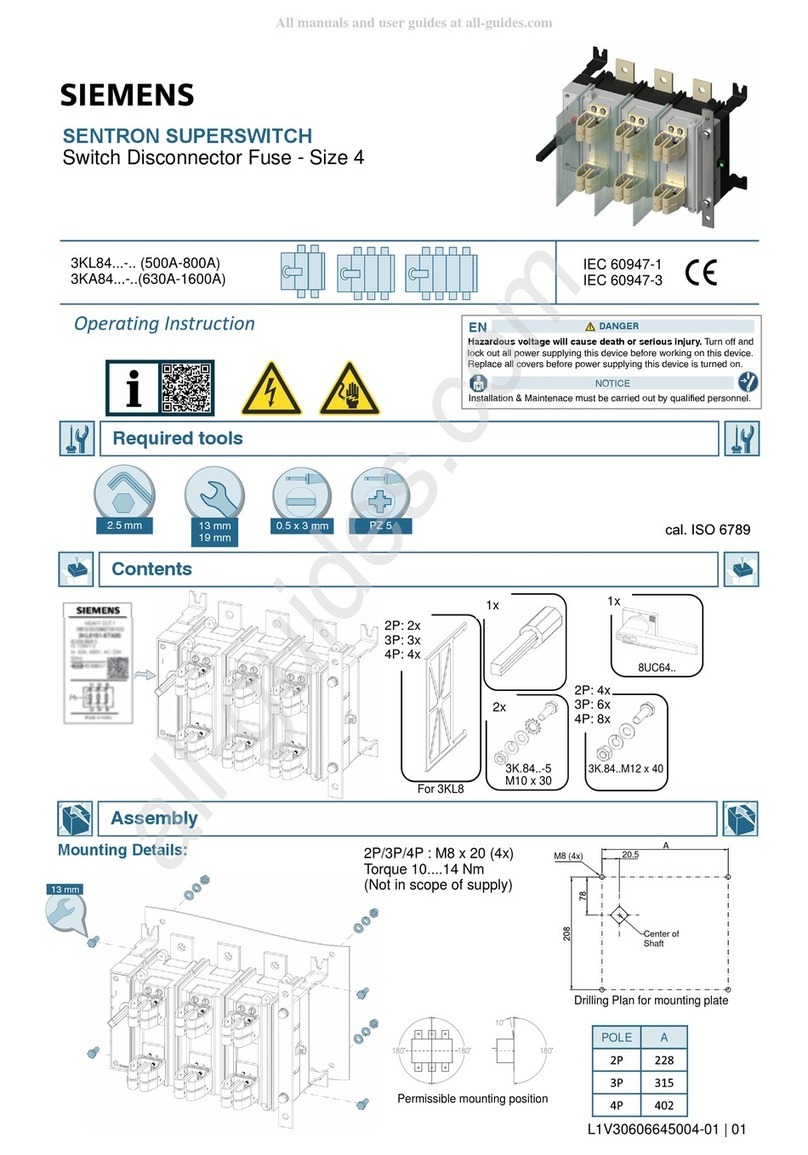
Siemens
Siemens SENTRON SUPERSWITCH 3KL84 Series Operating instruction
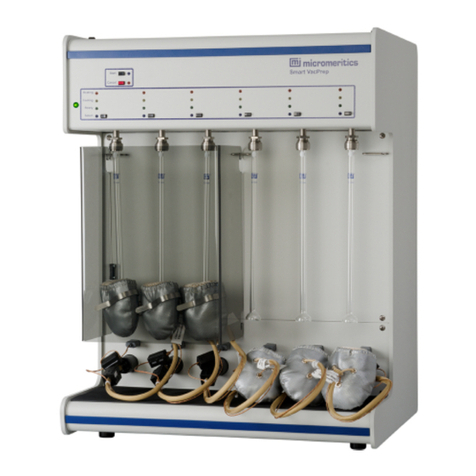
Micromeritics
Micromeritics Smart VacPrep Operator's manual

ABB
ABB HT846102 Operation manual
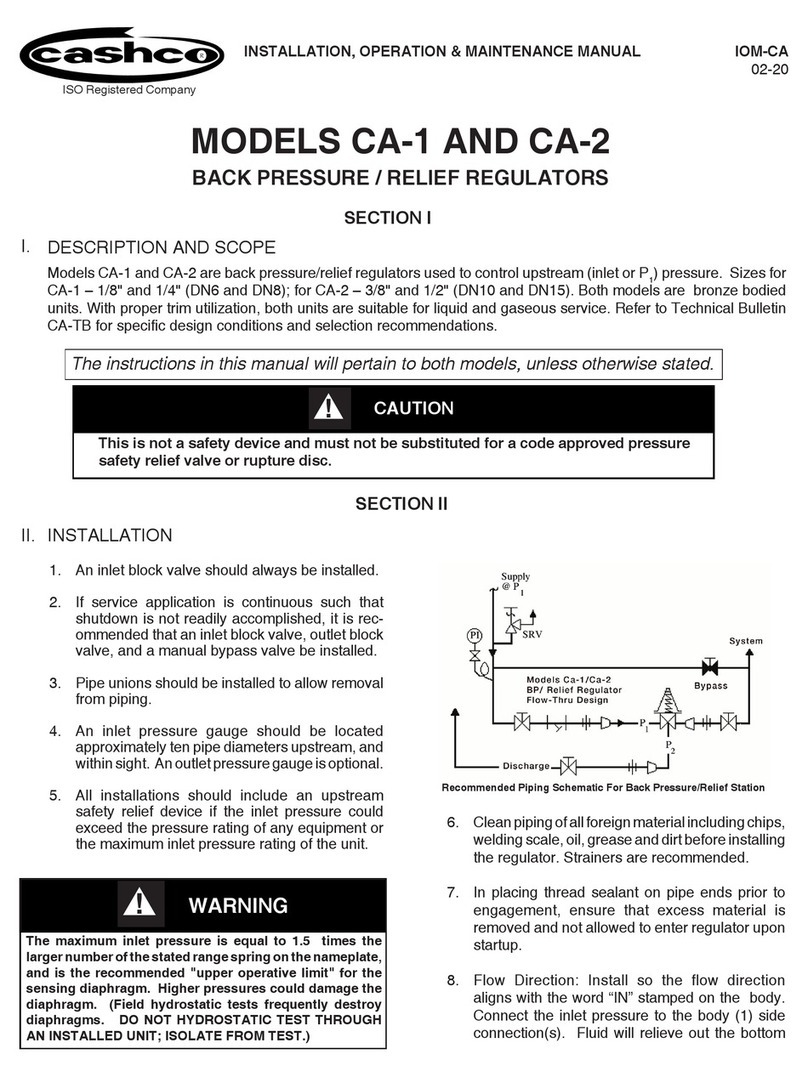
cashco
cashco CA1 Installation, operation & maintenance manual
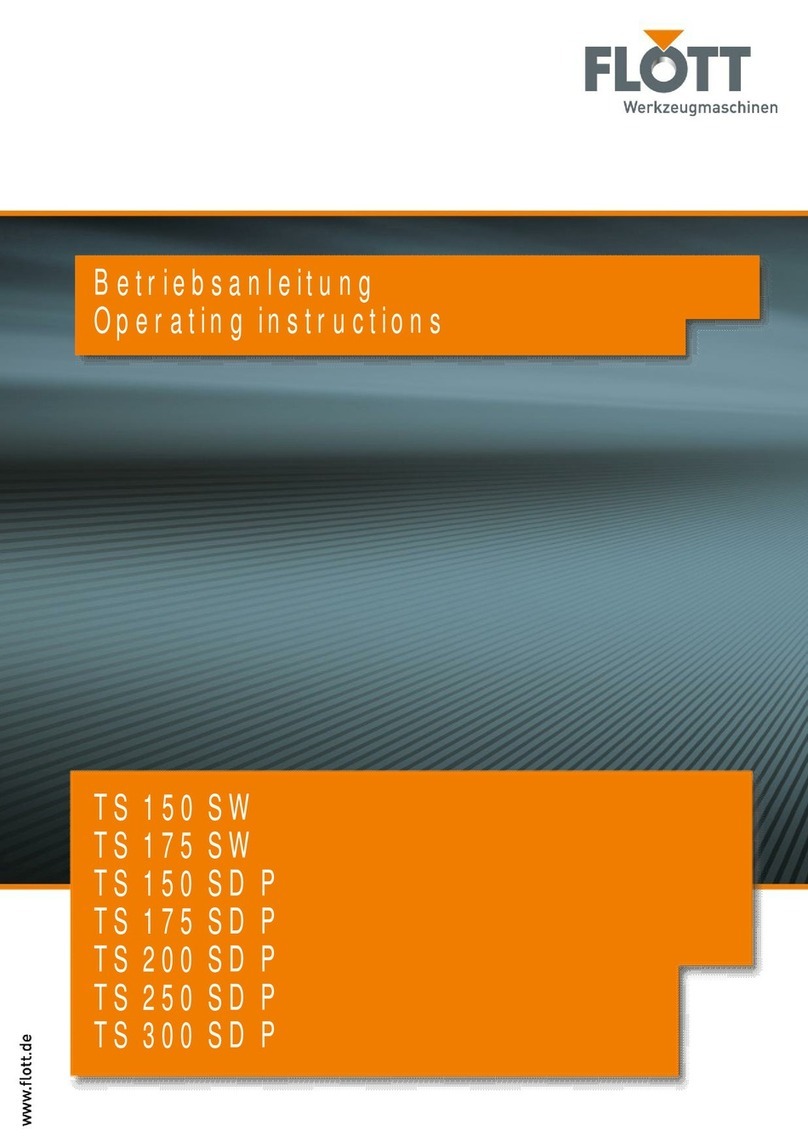
Flott
Flott TS 150 SW operating instructions
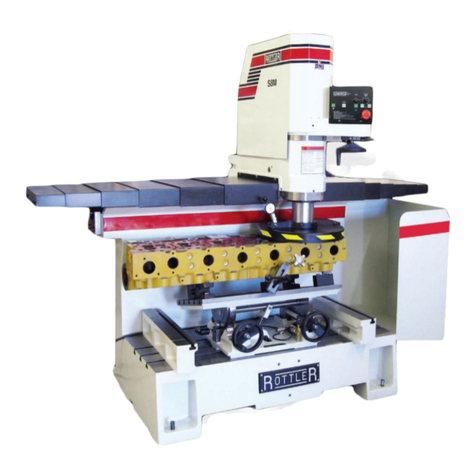
Rottler
Rottler SM Series Operation and maintenance manual
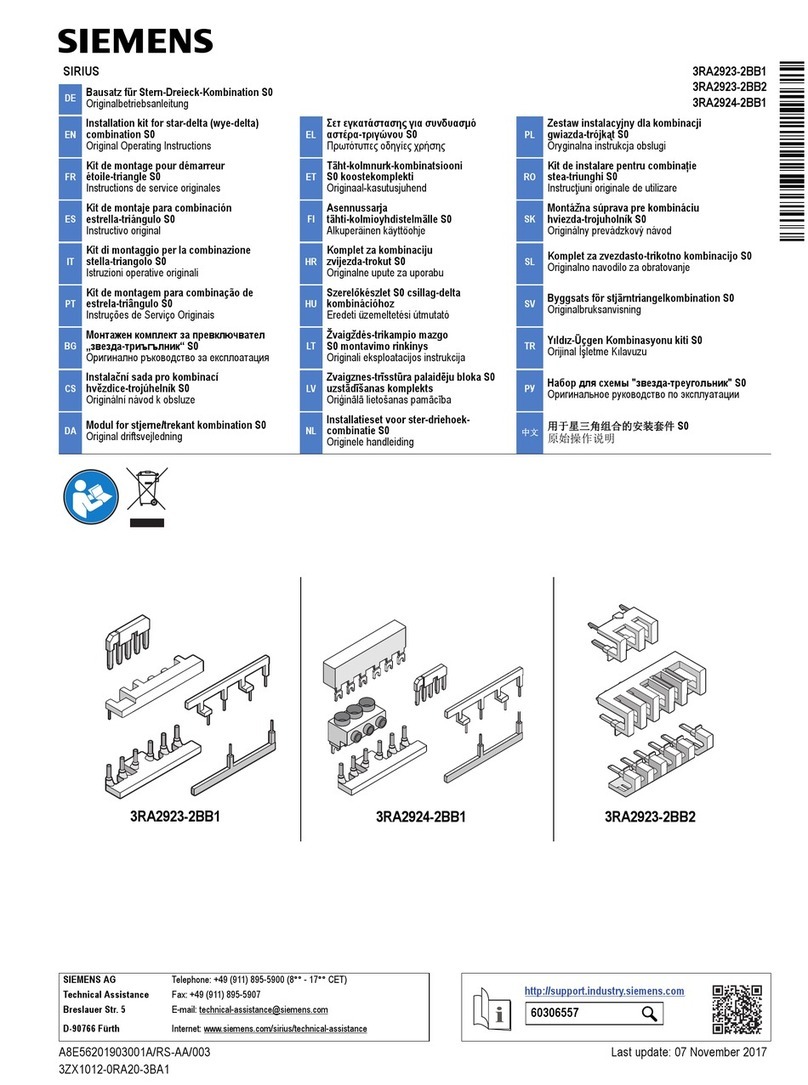
Siemens
Siemens SIRIUS S0 Original operating instructions

PCB Piezotronics
PCB Piezotronics M1380-02A manual
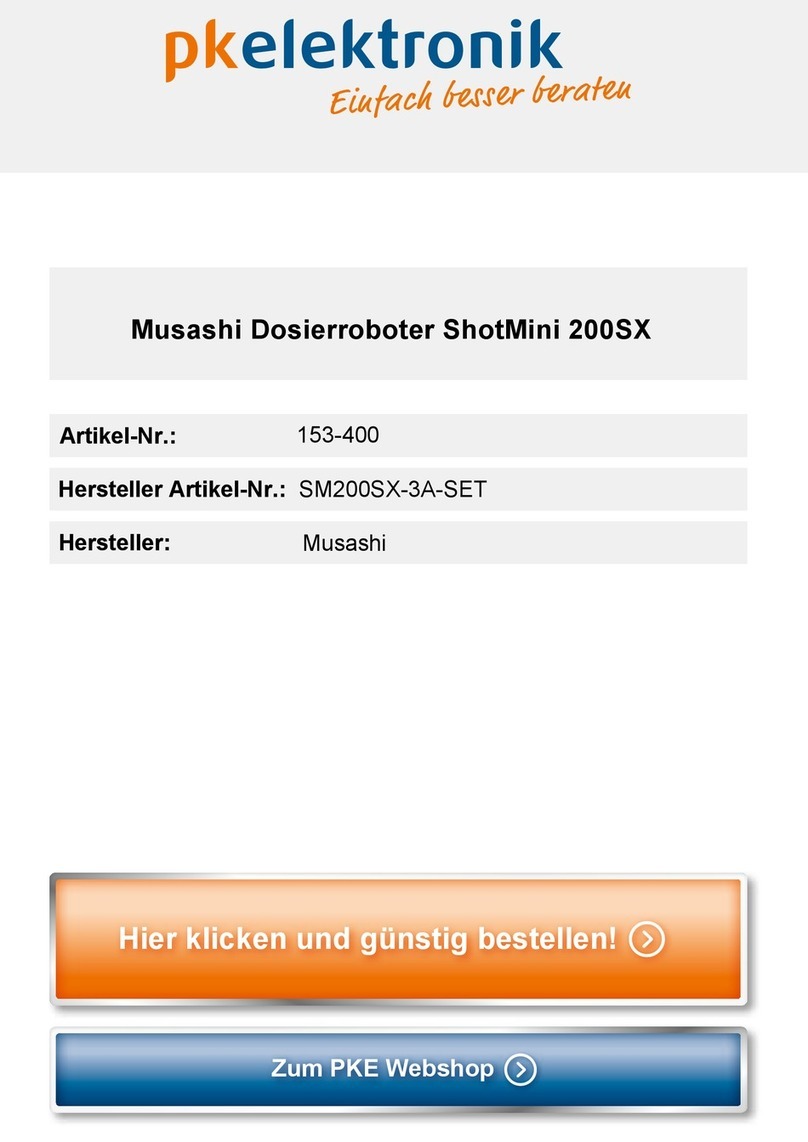
MUSASHI ENGINEERING
MUSASHI ENGINEERING ShotMini 200SX instruction manual
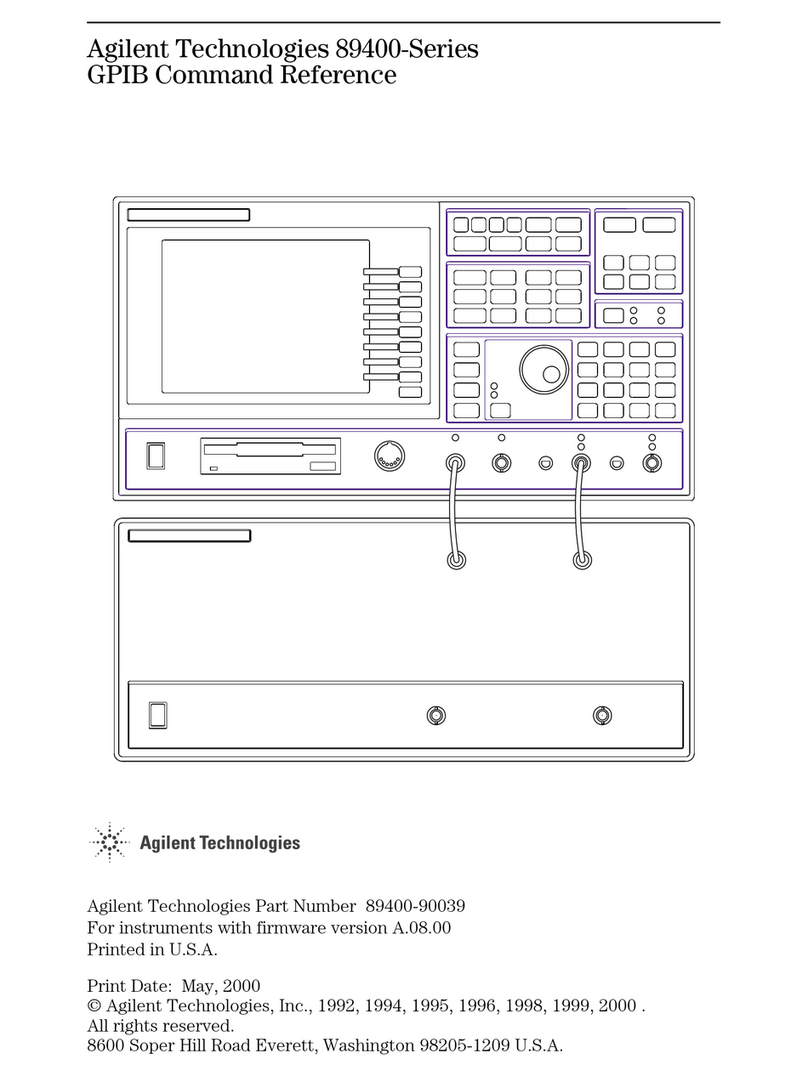
Agilent Technologies
Agilent Technologies 89400 Series Command reference
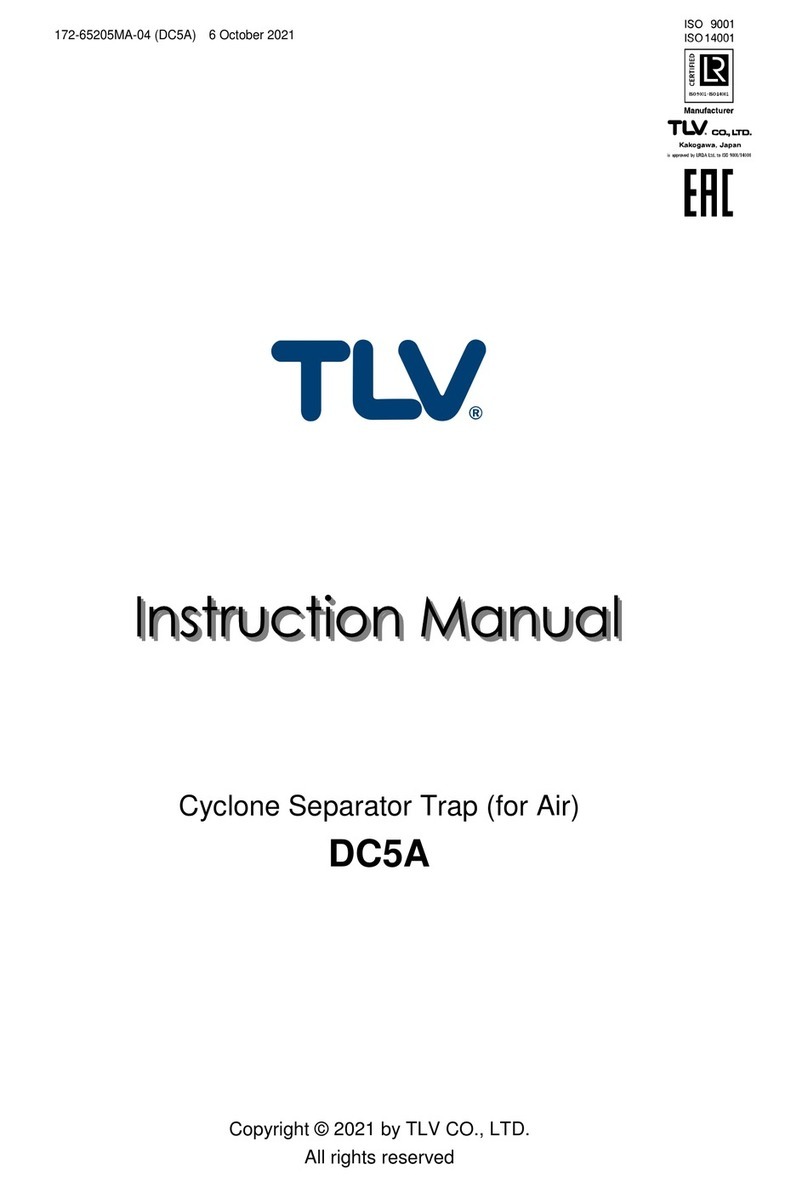
TLV
TLV DC5A instruction manual

TE Connectivity
TE Connectivity AMPOWER instruction sheet


